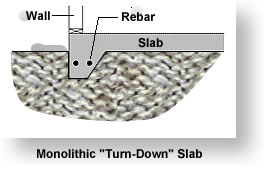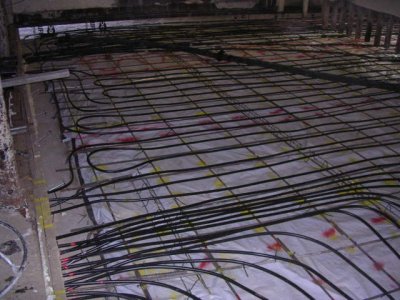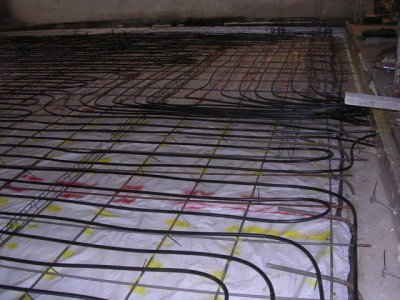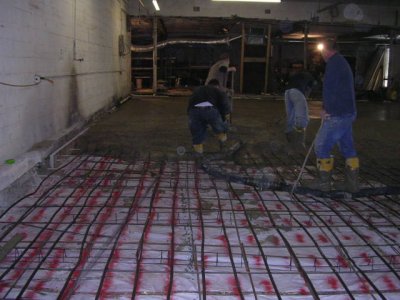Thanks guys.
We have some interesting tasks coming up soon. Now that the forms are set, I have something to measure from so I can locate and set my floor drains and the little bit of pluming I need to do (Just a toilet and a shop sink)
Then the interesting part.
We will be doing a heated slab under this building, this will be the primary source of heat for the building. We will have loops of 1/2" water tubing inside the concrete slab, heated water will be circulated through these water tubes to heat the concrete. The heat will be provided by an electric boiler which will be set up on it's own power meter with a remote shut off which is controlled by the power company. We call it "off-peak" electic.
Basically, here's how it works. The power company sells us kilowatts at a substantially reduced rate for this heating unit. There is a trade off for this reduced rate, the power company can and will shut the power off to that heating unit when they are experiencing high load requirements for customers. They can only shut it off for like 6 hours at a time I believe (something like that) and then they have to turn it on for at least 6. This plan allows them to free up some capacity for other customers. And since the concrete slab stores so much heat, most times when they have my power shut off to my heater, I won't even know it.
Now here's the part that I find interesting, because it's kind of new.
We will be insulating under and around the outside edges of the concrete with high density foam insulation. Now that in itself isn't really all that new of a concept, what is new is the idea of incorporating some spray foam for part of this slab insulation. We will be putting down sheets of 1" blue board foam insulation after the floor drains and pluming is set. These sheets will be cut to fit like puzzle pieces that will cover the bottom area of the pour. After the floor area is lined with this 1" blue board sheeting, a contractor will use a spray foam machine to apply an additional 1" of high density foam over the top of the 1" blue board. This will add R value and the spray will seal up all of the seams between blue board sheets, it will get us sealed up perfectly in the thickened edges of the slab and sealed up perfectly tight around all floor drains etc.
After the spray foam, the pex tubing will be laid out in a pre planned arrangement. We will route the tubing in a way that expels heating focus on the exterior perimeter of the slab as a priority, loops will be limited to 300' or less in length. The pex tubing will be fastened with special staples that hold it to the foam. Rebar will be placed and tied, then spaced up off of the foam and pex tubing. Then we can finally pour the concrete.
The foam insulation will prevent the earth around and under the slab from dissipating the heat from the concrete. It SHOULD be a very efficient building to heat.
That's kind of important for us located in far northern MN. The Canadian border is about 15 miles north of this shop.




















